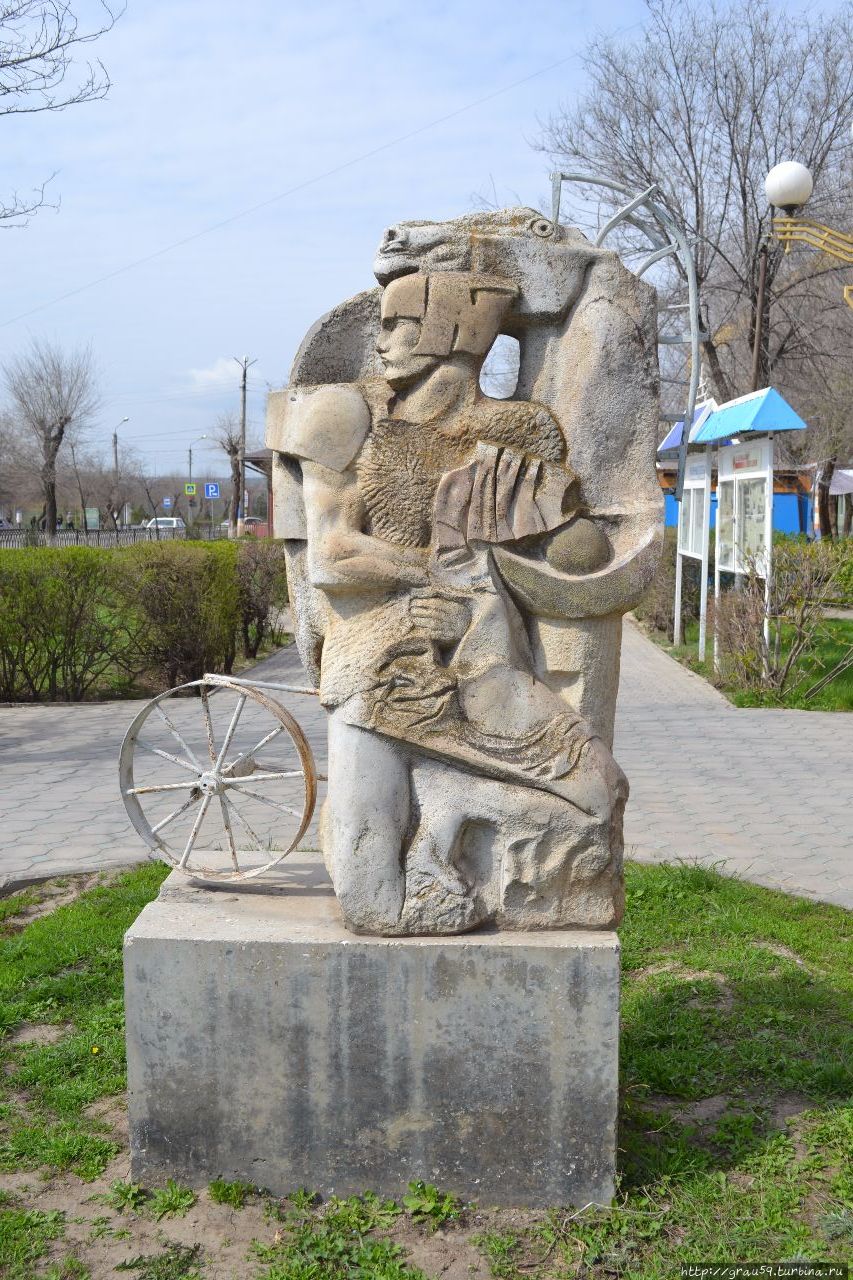
Скульптура «Возрождение»
Многофигурная композиция изображает поясную фигуру человека, справа над ним –голова и шея лошади, вместо гривы – металлические трубы в виде расходящихся лучей. В левой части скульптуры – ломаные, геометрические фигуры вместо руки человека, снизу изображено железное колесо с 12 спицами. Колесо прикреплено к основной композиции металлической трубой. В нижней части абрис лошади. На обратной стороне – многогранные фигуры, из которых вырисовывается контур человека.
Объемно изображение в рост лошади, склонившей голову. В рельефах различные округлые предметы. Скульптура водружена на невысокий прямоугольный пьедестал. По признанию автора – так образно он воплотил исторический путь калмыцкого народа, который выстоял, несмотря на множество испытаний.
Многочисленные, мелкие детали заставляют осмысливать работу. Налицо композиция и смысловая общность. Главные персонажи: человек и лошадь, устремленные в одном направлении, ведут за собой других.
В данной работе обновлен язык жанровой скульптуры: смело вводятся металлические конструкции, детали оборудования: колесо, железная грива лошади. Этот метод говорит об использовании конструктивистского приема в скульптуре. Производственная деталь конкретизирует основную идею: колесо – символ народа кочевника, в данном случае, несмотря на новаторство, наблюдается преемственность реалистических традиций.
Материал: камень-песчаник.
Скульптор: В.Джикия (в рамках Международного симпозиума скульпторов), 1997г.
Sculpture "Renaissance"
The multi-figured composition depicts a half-length figure of a man, on the right above him - the head and neck of a horse, instead of a mane - metal pipes in the form of diverging rays. On the left side of the sculpture there are broken, geometric shapes instead of a human hand, an iron wheel with 12 spokes is depicted below. The wheel is attached to the main composition by a metal pipe. At the bottom of the outline of the horse. On the reverse side there are multifaceted figures, from which the contour of a person looms.
A three-dimensional image of the height of a horse bowing its head. The reliefs contain various rounded objects. The sculpture is placed on a low rectangular pedestal. According to the author, this is how figuratively he embodied the historical path of the Kalmyk people, which survived despite many trials.
Numerous, small details make you comprehend the work. There is a composition and semantic community. Main characters: a man and a horse, directed in one direction, lead others.
In this work, the language of genre sculpture has been updated: metal structures, equipment parts are boldly introduced: a wheel, a horse's iron mane. This method speaks of the use of a constructivist technique in sculpture. The production detail concretizes the main idea: the wheel is a symbol of the nomadic people, in this case, despite the innovation, there is a continuity of realistic traditions.
Material: sandstone stone.
Sculptor: V. Dzhikia (within the framework of the International Symposium of Sculptors), 1997.